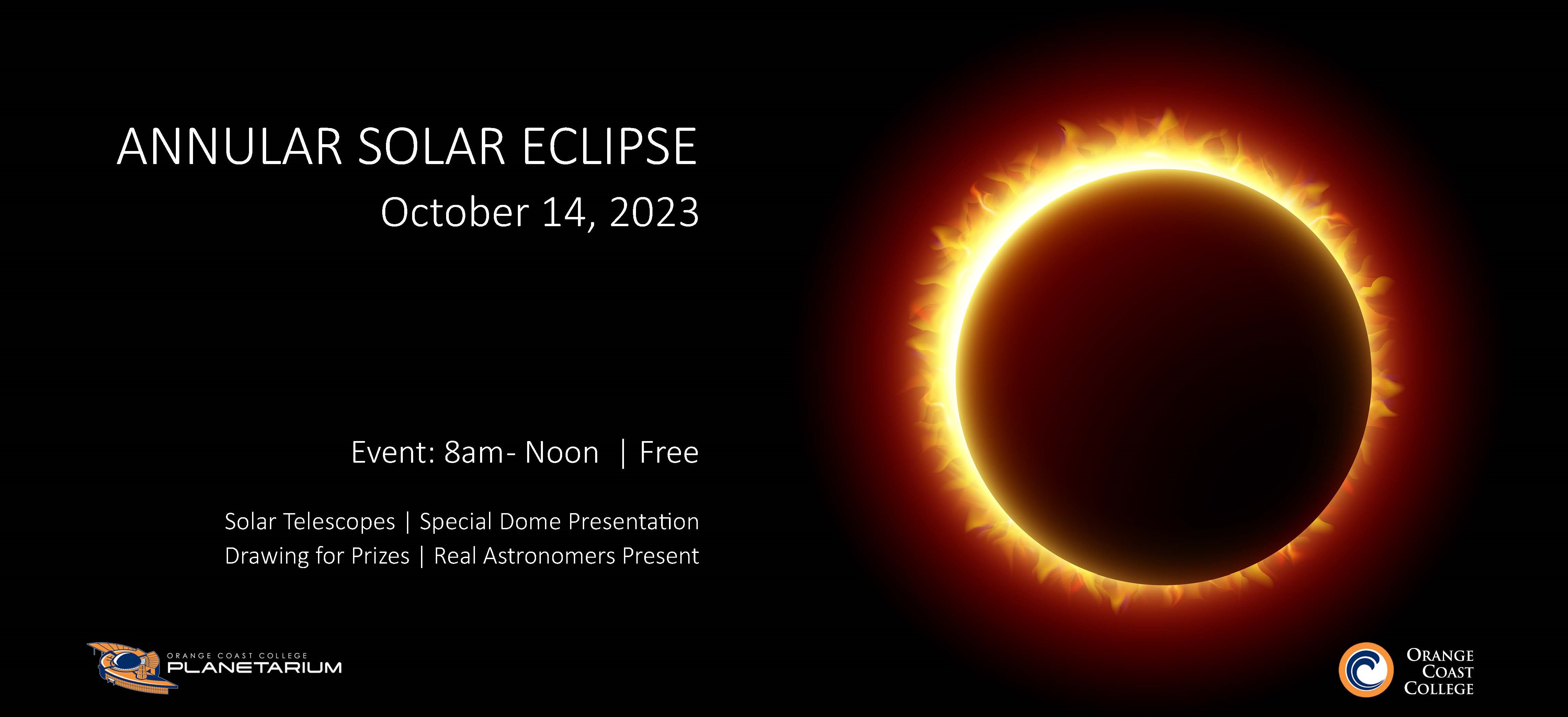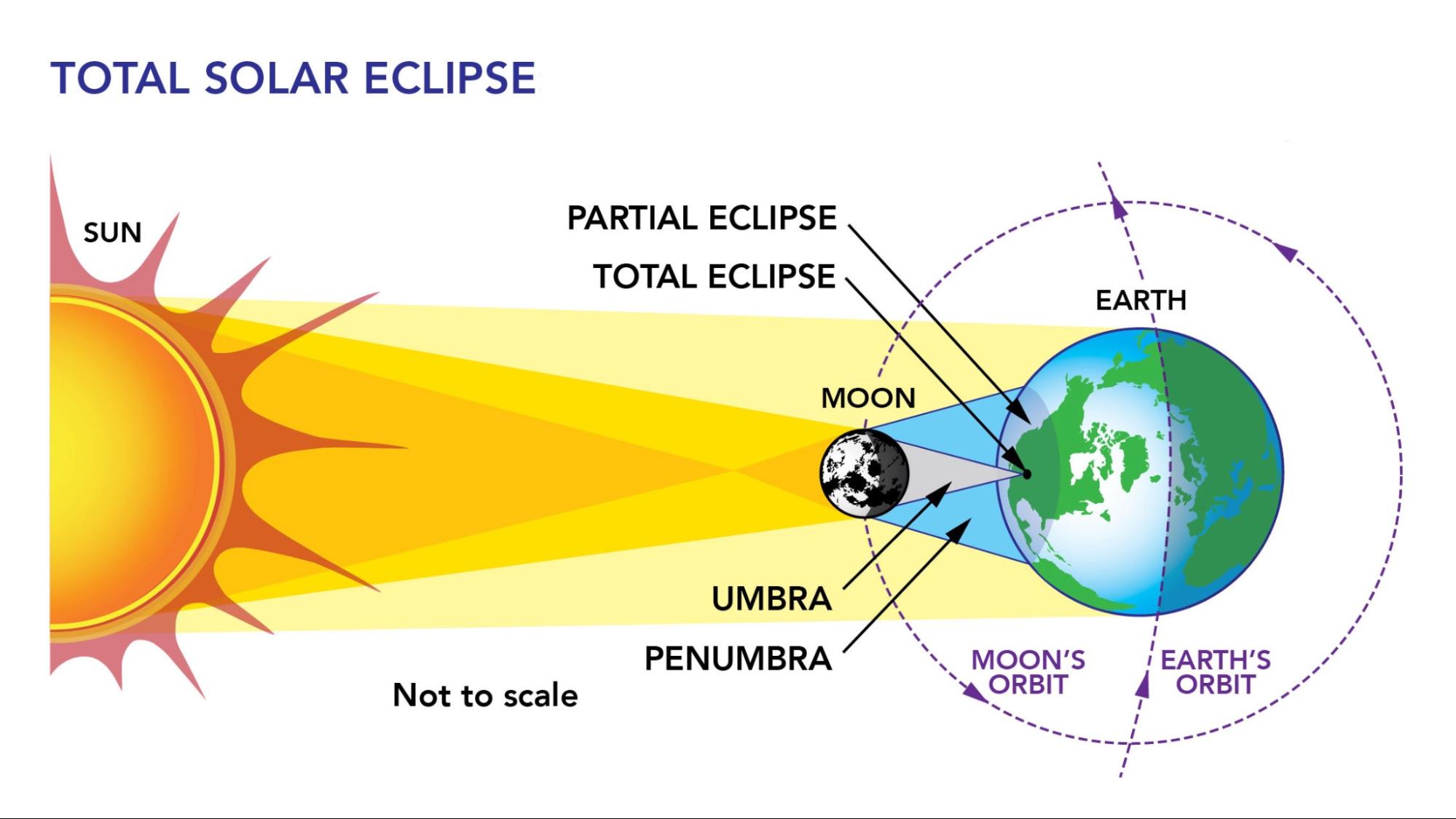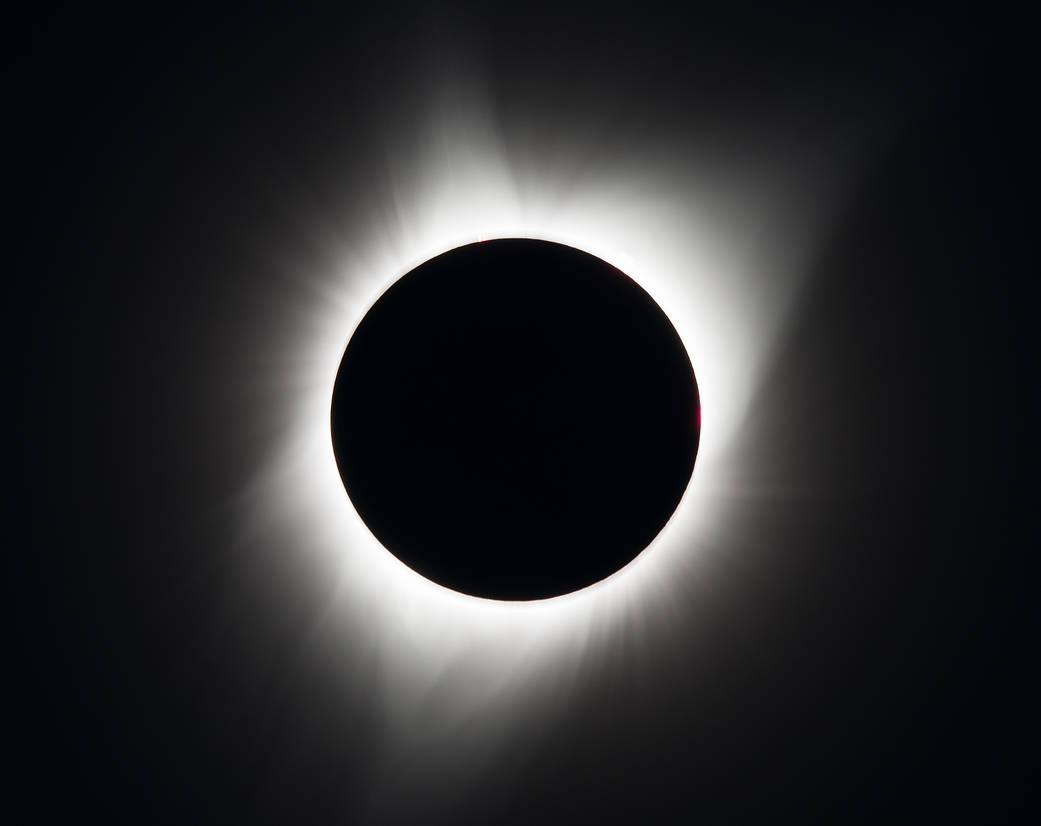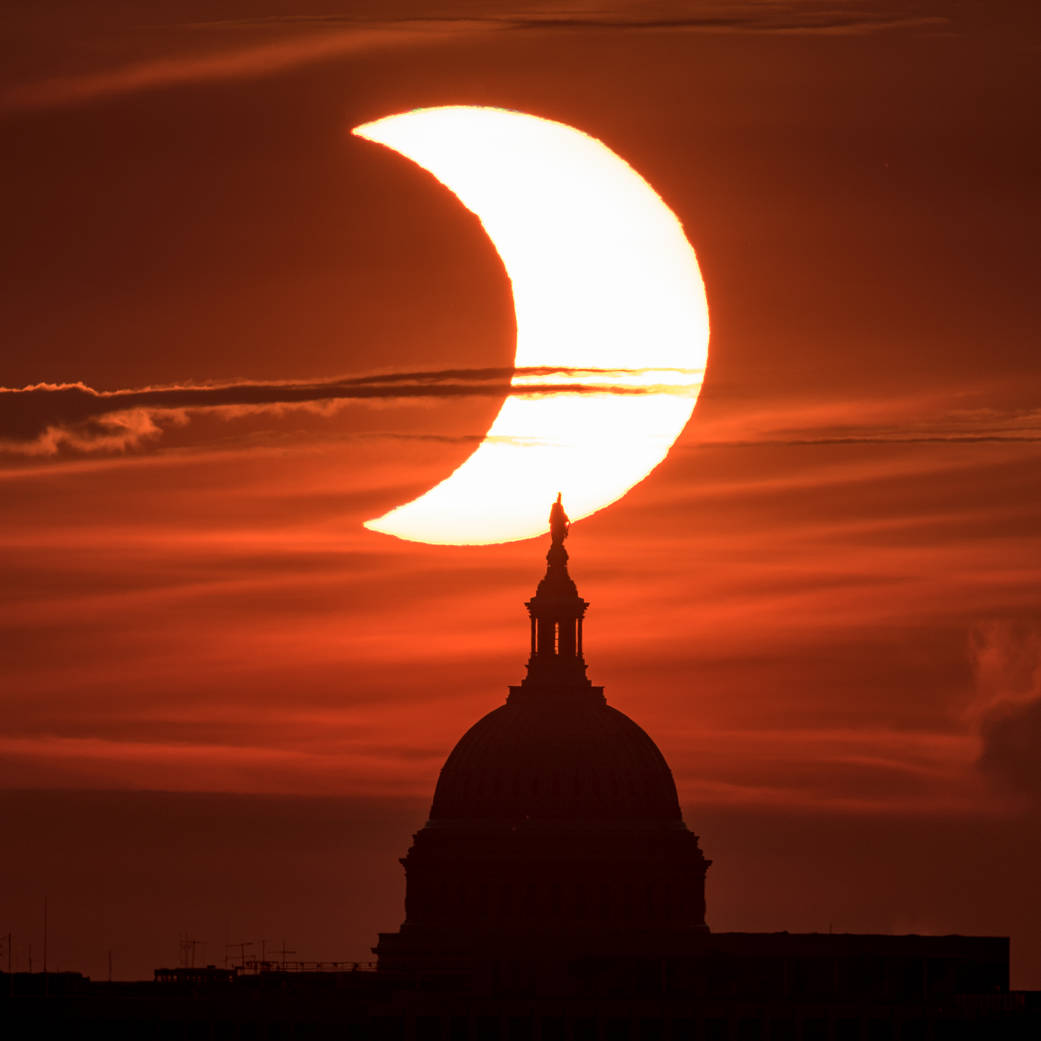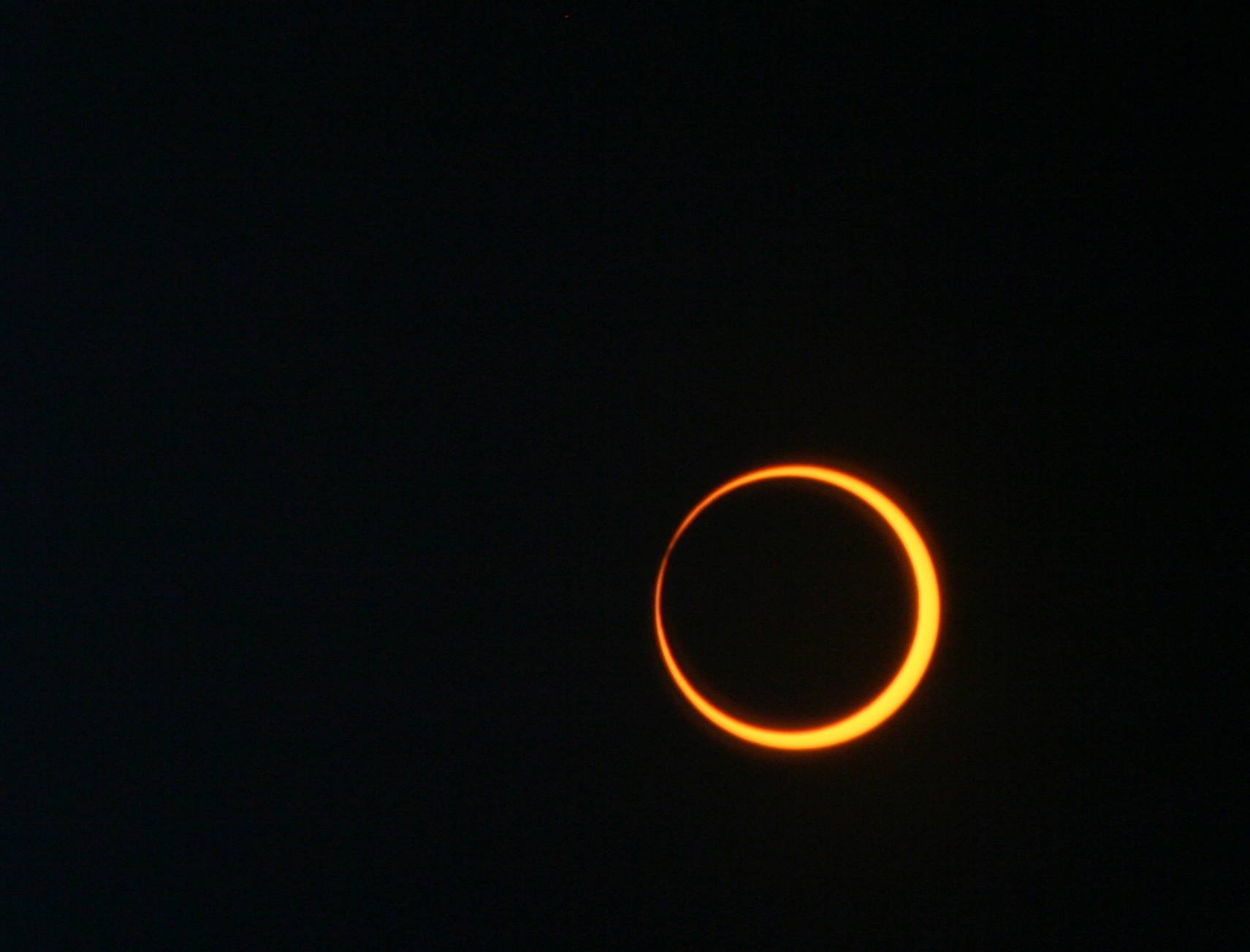Solar Eclipse - October 14, 2023
Written by: AJ Juarez
Solar eclipses are a spectacular sight—the obscuring of sunlight when the Moon passes between the Earth and the Sun, casting its shadow on our planet. A couple of things must happen simultaneously for a solar eclipse to occur. They can only take place during a new moon when the Moon is between the Sun and the Earth. The Moon must also be located in the same plane as the Sun, occurring twice each year since the lunar orbital plane is tilted 5 degrees relative to the plane in which the Earth and Sun orbit, known as the ecliptic plane. When both of these conditions are met, you get a solar eclipse! Still, there are various types of solar eclipses depending on the position of the Moon and how much sunlight it blocks.
The shadows of the Moon and the types of eclipses they produce. (Credits: NASA's Goddard Space Flight Center)
When the Moon completely blocks the face of the Sun, a total solar eclipse occurs. To view this enchanting show, you must be within the fully shaded region of the Moon’s shadow, known as the umbra. During a total solar eclipse, the sky darkens significantly and the Sun’s upper atmosphere, the corona, is visible.
A total solar eclipse is seen on Monday, Aug. 21, 2017 above Madras, Oregon. (Source: NASA/Aubrey Gemignani)
If the Moon passes between the Earth and Sun, but the three are not completely lined up, a partial solar eclipse transpires. This happens when the observer is in the partially shaded region of the Moon’s shadow, known as the penumbra. A crescent shape will form as a portion of the Sun is blocked out by the Moon.
A partial solar eclipse is seen as the Sun rises behind the United States Capitol Building on June 10, 2021, as seen from Arlington, Virginia. (Credit: NASA/Bill Ingalls)
When the Moon blocks out the Sun, but is at or close to its furthest point in its elliptical orbit around Earth, an annular solar eclipse takes place. Since the Moon is further away, it does not completely cover the face of the Sun and a ring of sunlight appears around the Moon.
An annular solar eclipse photographed on May 20, 2012. (Credit: NASA/Bill Dunford)
The primary reason why total and partial solar eclipses can form is due to the size and distance of the Moon relative to the Sun. The Sun is approximately 400 times larger than the Moon, but it is also about 400 times farther away from the Earth. This causes the Sun and the Moon to appear the same angular size of 0.5 degrees in the sky and allows the Moon to perfectly cover the Sun.
However, their apparent sizes can vary because of the Moon’s elliptical orbit around the Earth and the Earth’s elliptical orbit around the Sun. Sometimes, the Moon appears larger than the Sun when it is closer in its orbit to the Earth; other times it appears smaller because it is further away, which is what happens during an annular eclipse. Moreover, the Earth is closest to the Sun in January and furthest away in July.
Fortunately, observers will not have to wait long for the next solar eclipse. An annular eclipse will be visible in many parts of North and South America on Saturday, October 14th. From Costa Mesa, California, roughly 70% of the Sun will be covered by the Moon and maximum coverage will be at approximately 9:25 am. Join the Orange Coast College Planetarium and watch with us through powerful solar telescopes and eclipse glasses as the Moon passes between the Earth and the Sun. Astronomers will be present to explain the celestial sight!
Note: It is not safe to look at the Sun without special eye protection. Regular sunglasses are not safe for viewing the Sun.

